Seismic Performance of High-Rise Condominium Building during the 2015 Gorkha Earthquake Sequence
Abstract
:1. Introduction
2. Materials and Methods
- Modulus of Elasticity of steel, Es = 200,000 MPa
- Modulus of Elasticity of concrete, Ec = 5000√fck = 25,000 MPa
- Characteristic strength of concrete, fck = 25 MPa
- Yield stress for steel, fy = 500 MPa
3. Rapid Visual Assessment after the Gorkha Earthquake Sequence
4. Analytical Modelling Results
5. Conclusions
Author Contributions
Funding
Acknowledgments
Conflicts of Interest
References
- Bureau of Indian Standard. Criteria for Earthquake Resistant Design of Structures, 6th ed.; Bureau of Indian Standard: New Delhi, India, 2016.
- Gautam, D.; Rodrigues, H.; Bhetwal, K.K.; Neupane, P.; Sanada, Y. Common structural and construction deficiencies of Nepalese buildings. Innov. Infrastruct. Solut. 2016, 1. [Google Scholar] [CrossRef] [Green Version]
- Gautam, D.; Chaulagain, H. Structural performance and associated lessons to be learned from world earthquakes in Nepal after 25 April 2015 (MW 7.8) Gorkha earthquake. Eng. Fail. Anal. 2016, 68, 222–243. [Google Scholar] [CrossRef]
- Barbosa, A.R.; Fahnestock, L.A.; Fick, D.R.; Gautam, D.; Soti, R.; Wood, R.; Moaveni, B.; Stavridis, A.; Olsen, M.J.; Rodrigues, H. Performance of medium-to-high rise reinforced concrete frame buildings with masonry infill in the 2015 Gorkha, Nepal, earthquake. Earthq. Spectra 2017, 33, S197–S218. [Google Scholar] [CrossRef]
- Varum, H.; Furtado, A.; Rodrigues, H.; Dias-Oliveira, J.; Vila-Pouca, N.; Arede, A. Seismic performance of the infill masonry walls and ambient vibration tests after the Ghorka 2015, Nepal earthquake. Bull. Earthq. Eng. 2017, 15, 1185–1212. [Google Scholar] [CrossRef]
- Gautam, D.; Fabbrocino, G.; Santucci de Magistris, F. Derive empirical fragility functions for the residential buildings in Nepal. Eng. Struct. 2018, 171, 612–628. [Google Scholar] [CrossRef]
- Grunthal, G. Euripean Macroseismic Scale 1998 (EMS-98); Centre Européen de Géodynamique et de Séismologie: Luxemburg, 1998. [Google Scholar]
- Centeno, J.; Ventura, C.E.; Ingham, J.M. Seismic performance of a six-story reinforced concrete masonry building during the Canterbury earthquake sequence. Earthq. Spectra 2014, 30, 363–381. [Google Scholar] [CrossRef]
- Sawaki, Y.; Rupakhety, R.; Olafsson, S.; Gautam, D. System identification of a residential building in Kathmandu using aftershocks of 2015 Gorkha earthquake and triggered noise data. In Proceedings of the International Conference on Earthquake Engineering and Structural Dynamics, ICESD 2017; Rupakhety, R., Olafsson, S., Bessason, B., Eds.; Geotechnical, Geological and Earthquake Engineering. Springer: Berlin, Germany, 2019; Volume 47, pp. 233–247. [Google Scholar] [CrossRef]
- Verderame, G.M.; Ricci, P.; De Luca, F.; Del Gaudio, C.; De Risi, M.T. Damage scenarios for RC buildings during the 2012 Emilia (Italy) earthquake. Soil Dyn. Earthq. Eng. 2014, 66, 385–400. [Google Scholar] [CrossRef] [Green Version]
- Del Gaudio, C.; Ricci, P.; Verderame, G.M.; Manfredi, G. Urban scale seismic fragility assessment of RC buildings subjected to L’Aquila earthquake. Soil Dyn. Earthq. Eng. 2017, 96, 47–63. [Google Scholar] [CrossRef]
- Romao, X.; Costa, A.A.; Pauperio, E.; Rodrigues, H.; Vicente, R.; Varum, H.; Costa, A. Field observations and interpretation of the structural performance of constructions after the 11 May 2011 Lorca earthquake. Eng. Fail. Anal. 2013, 34, 670–692. [Google Scholar] [CrossRef]
- Westenenk, B.; de la Llera, J.C.; Besa, J.J.; Junemann, R.; Moehle, J.; Luders, C.; Inaudi, J.A.; Elwood, K.J.; Hwang, S.-H. Response of reinforced concrete buildings in Concepcion during the Maule earthquake. Earthq. Spectra 2012, 28, S257–S280. [Google Scholar] [CrossRef]
- Scawthorn, C. Building aspects of the 2004 Niigata Ken Chuetsu, Japan, earthquake. Earthq. Spectra 2006, 22, S75–S88. [Google Scholar] [CrossRef]
- Holliday, L.; Grant, H. Haiti building failures and a replicable building design for improved earthquake safety. Earthq. Spectra 2011, 27, S277–S297. [Google Scholar] [CrossRef]
- Gautam, D.; Rodrigues, H. Seismic vulnerability of urban vernacular buildings in Nepal: Case of Newari construction. J. Earthq. Eng. 2018. [Google Scholar] [CrossRef]
- Rupakhety, R.; Sigbjornsson, R.; Olafsson, S. Damage to residential buildings in Hveragerði during the 2008 Ölfus Earthquake: Simulated and surveyed results. Bull. Earthq. Eng. 2016, 14, 1945–1955. [Google Scholar] [CrossRef]
- Gerardi, V.; Ditommaso, R.; Auletta, G.; Ponzo, F.C. Reinforced concrete framed structures: Numerical validation of two physical models capable to consider the stiffness contribution of infill panels on framed structures in operative conditions. Ing. Sismica 2018, 35, 1–21. [Google Scholar]
- Bilotta, A.; Tomeo, R.; Nigro, E.; Manfredi, G. Evaluation of the seismic demand of an existing tall building. Ing. Sismica 2018, 35, 67–87. [Google Scholar]
- Montuori, R.; Nastri, E.; Piluso, V. Modelling of floor joists contribution to the lateral stiffness of RC buildings designed for gravity loads. Eng. Struct. 2016, 121, 85–96. [Google Scholar] [CrossRef]
- Donà, M.; Minotto, M.; Saler, E.; Tecchio, G.; da Porto, F. Combined in-plane and out-of-plane seismic effects on masonry infills in RC frames. Ing. Sismica 2017, 34, 157–173. [Google Scholar]
- Preti, M.; Bolis, V. Seismic analysis of a multistory RC frame with infills partitioned by sliding joints. Ing. Sismica 2017, 34, 175–187. [Google Scholar]
- Federal Emergency Management Agency. Rapid Visual Screening of Building for Potential Hazards: A Handbook; Federal Emergency Management Agency: Washington, DC, USA, 2015.
- Computers and Structures [CSI] Inc. SAP: Integrated Software for Structural Analysis and Design, v. 19; Computers and Structures [CSI] Inc.: Walnut Cree, CA, USA, 2001. [Google Scholar]
- Bureau of Indian Standard. Plain and Reinforced Concrete–Code of Practice [IS 456-2000]; Bureau of Indian Standard: New Delhi, India, 2000.
- U.S.G.S. M 7.8–36 km E of Khudi, Nepal. 2015. Available online: https://earthquake.usgs.gov/earthquakes/eventpage/us20002926/executive (accessed on 25 November 2018).
- Gautam, D.; Santucci de Magistris, F.; Fabbrocino, G. Soil liquefaction in Kathmandu valley due to 25 April 2015 Gorkha, Nepal earthquake. Soil Dyn. Earthq. Eng. 2017, 97, 37–47. [Google Scholar] [CrossRef]
- Structural Engineers Association of California (SEAOC), VISION-2000. A Framework for Performance-Based Design; Vols. I, II, III; VISION-2000 Committee: Sacramento, CA, USA, 1995. [Google Scholar]
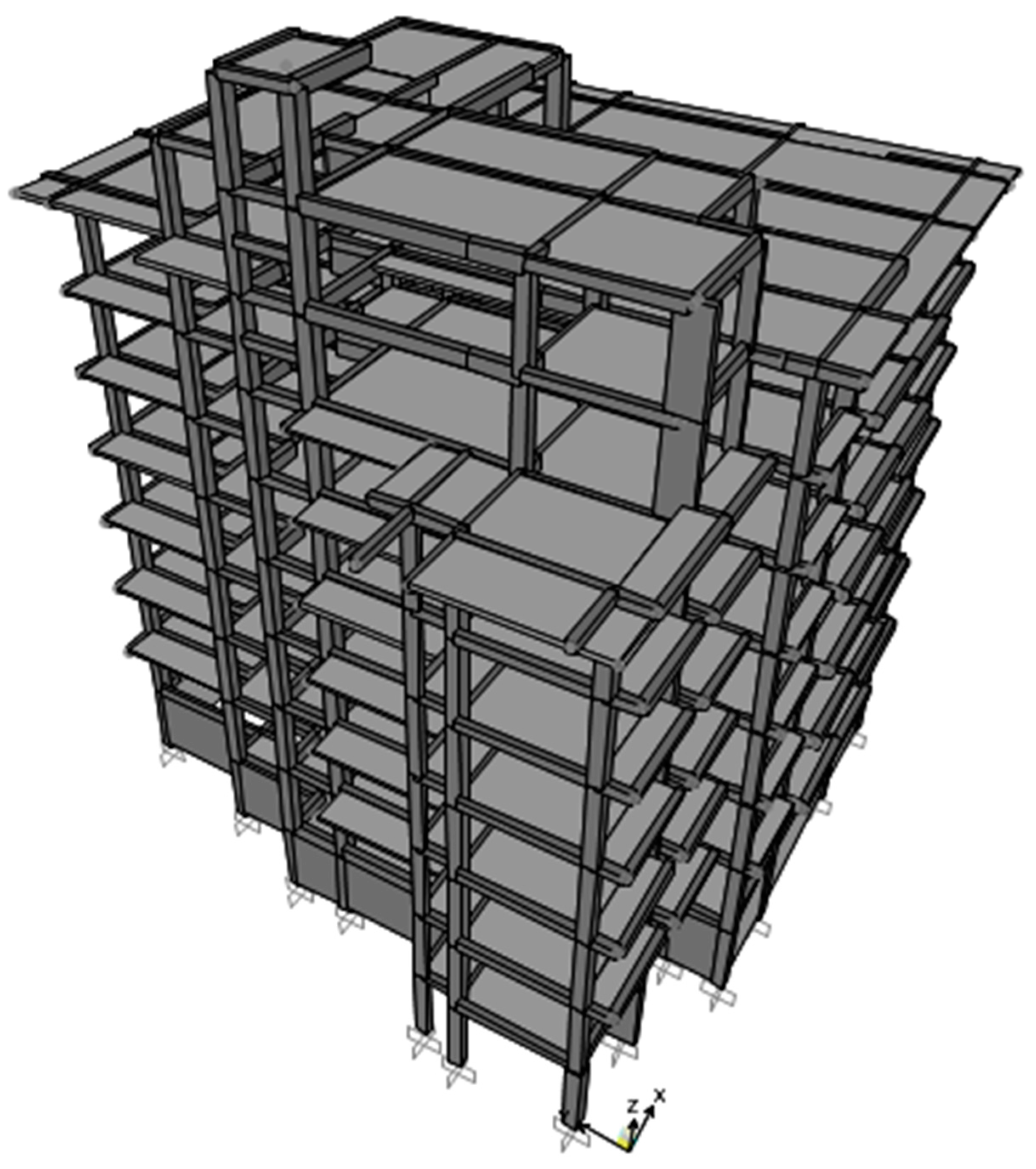

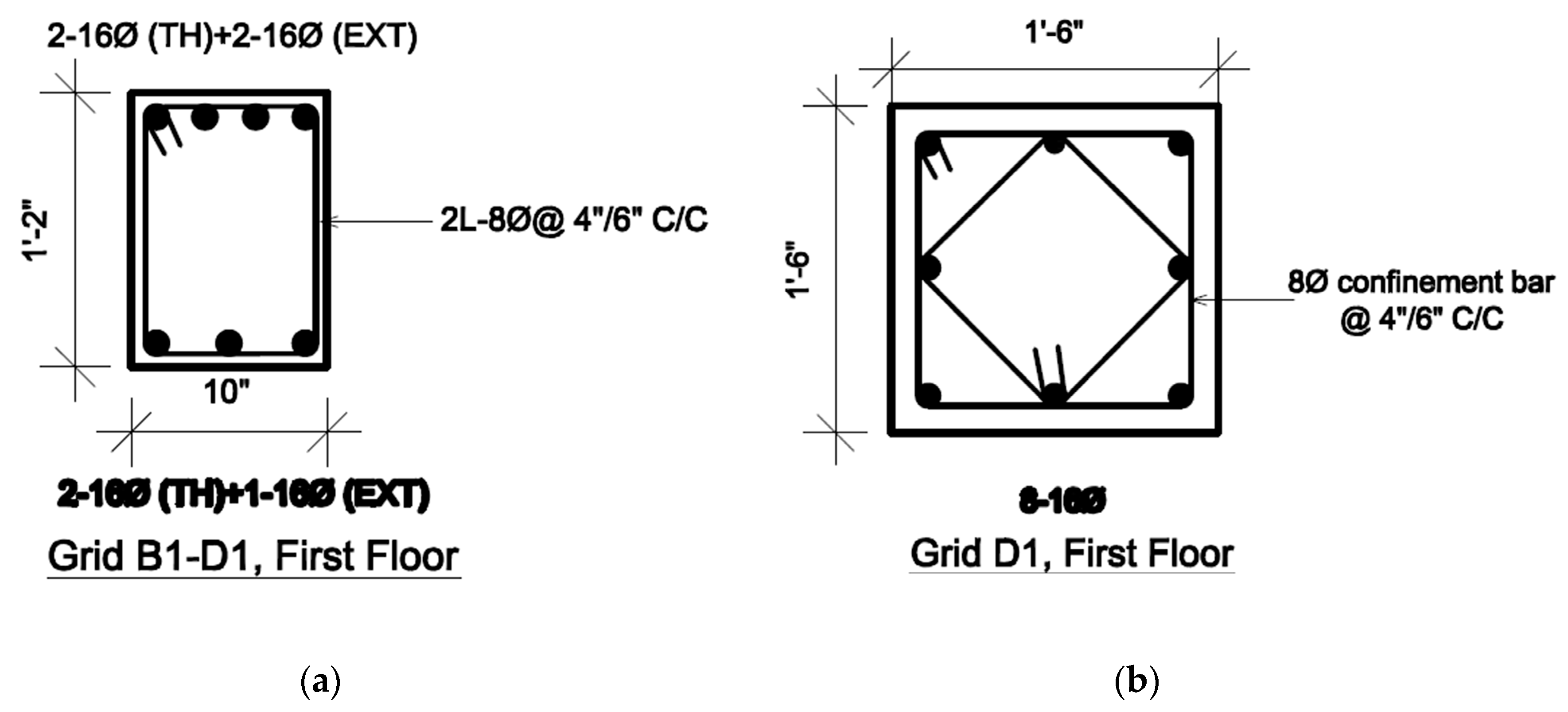
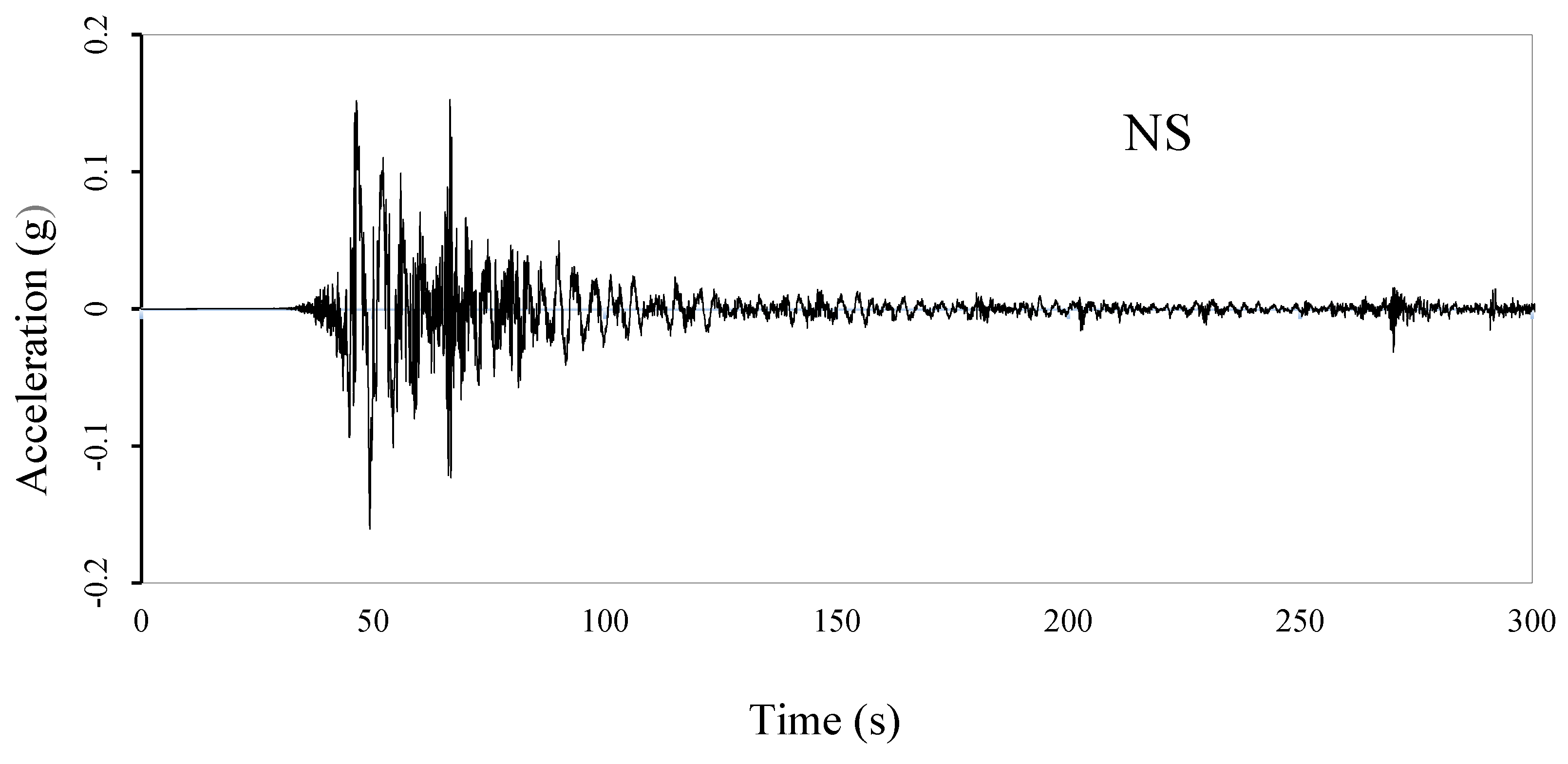
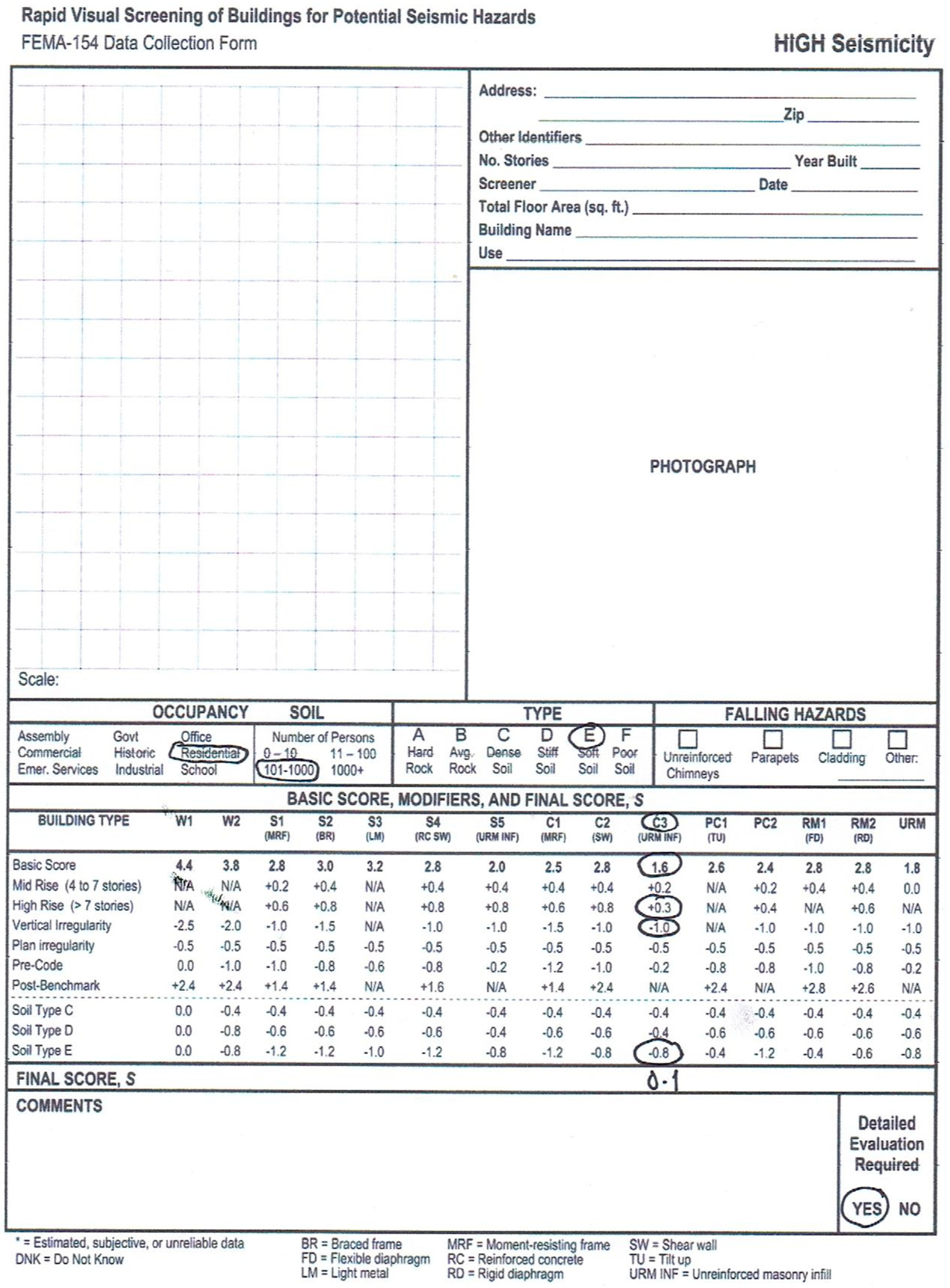
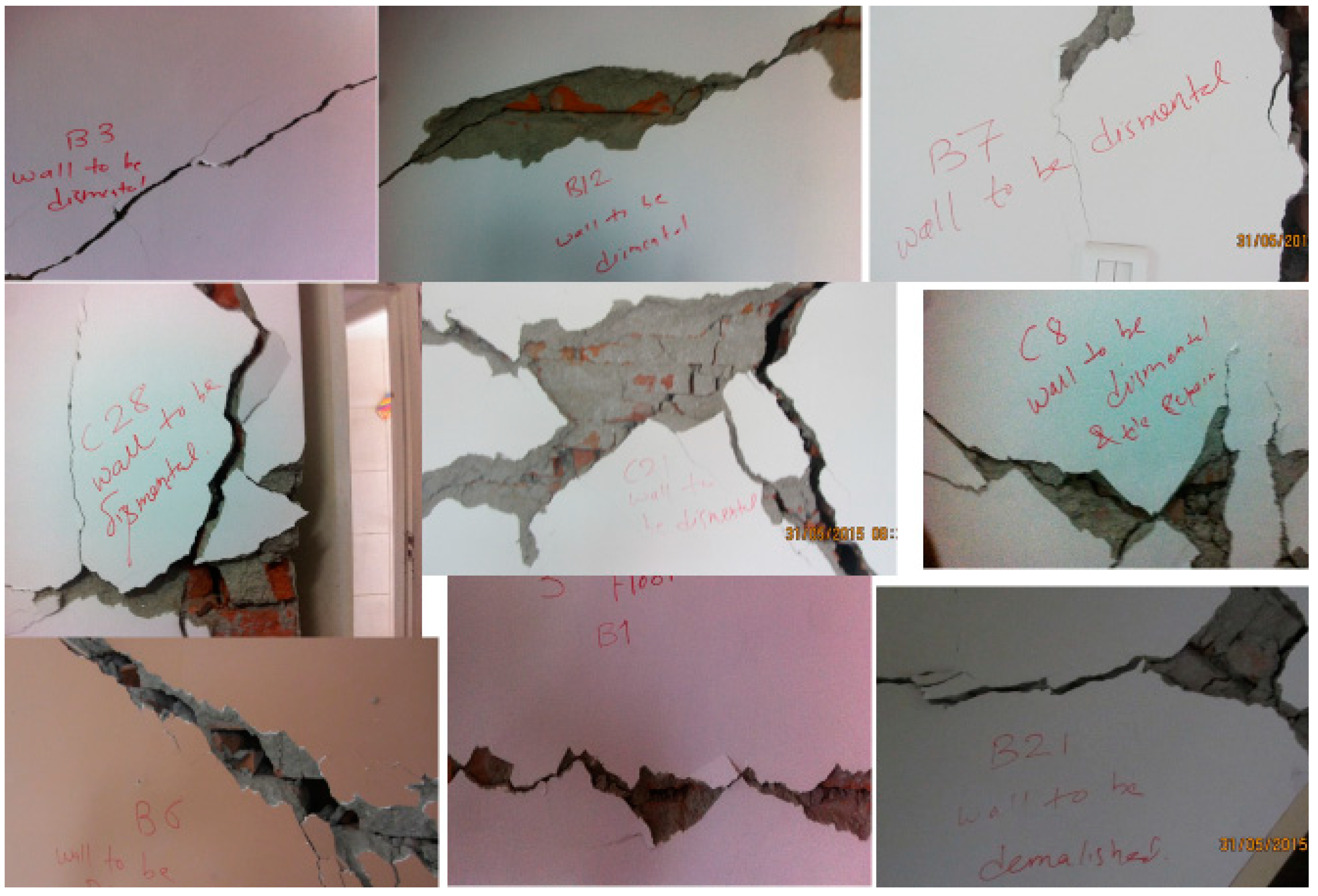
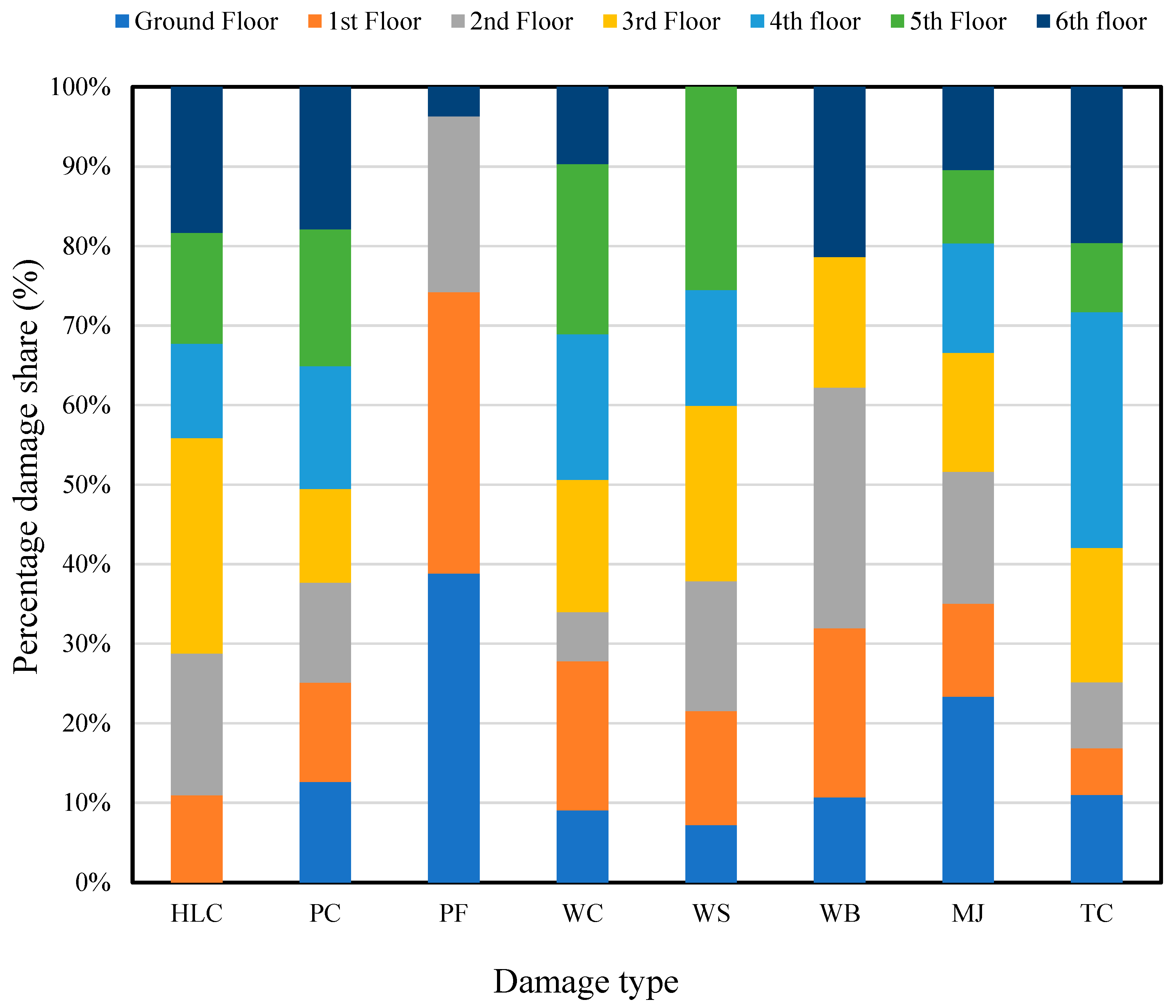
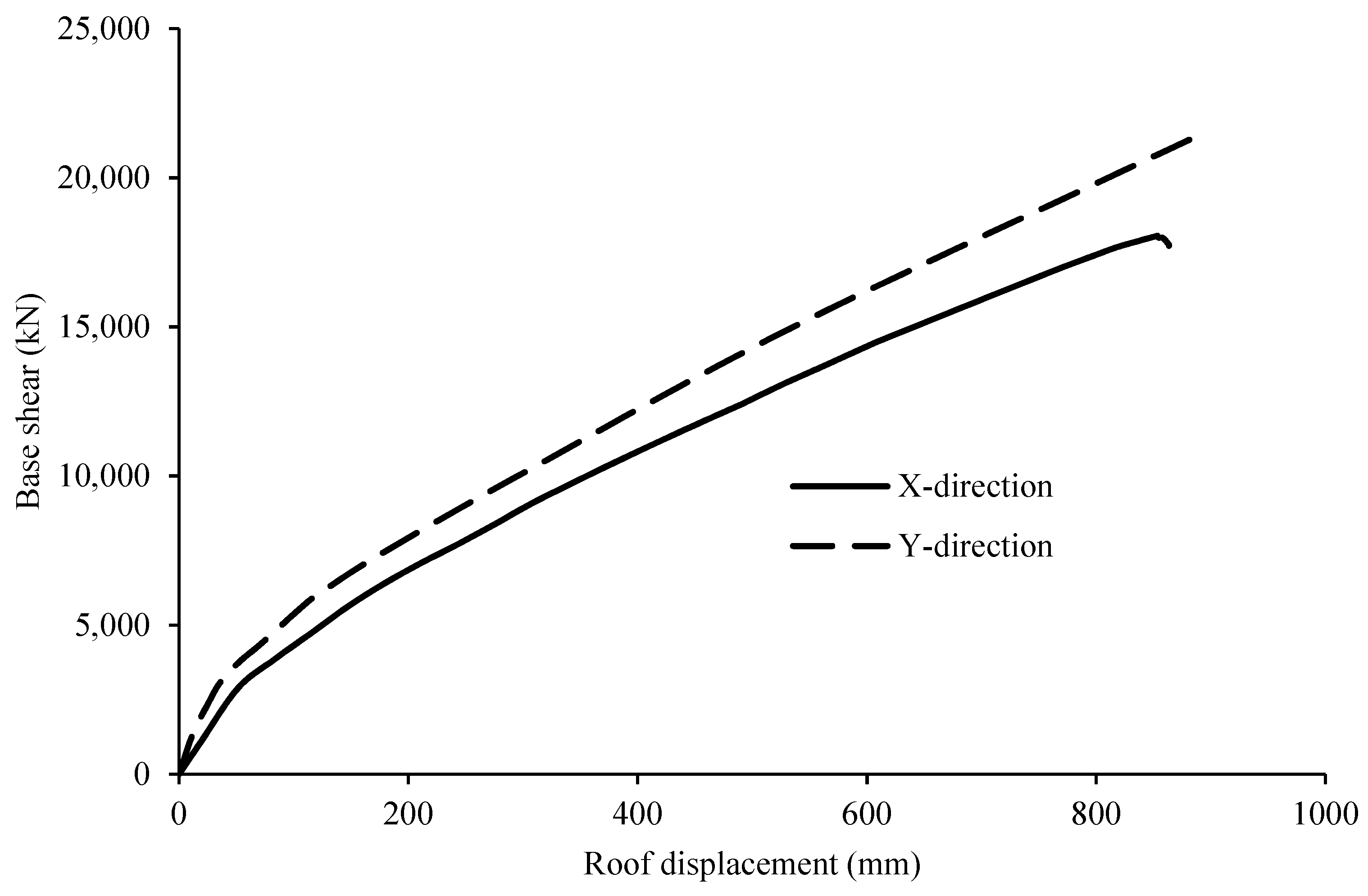
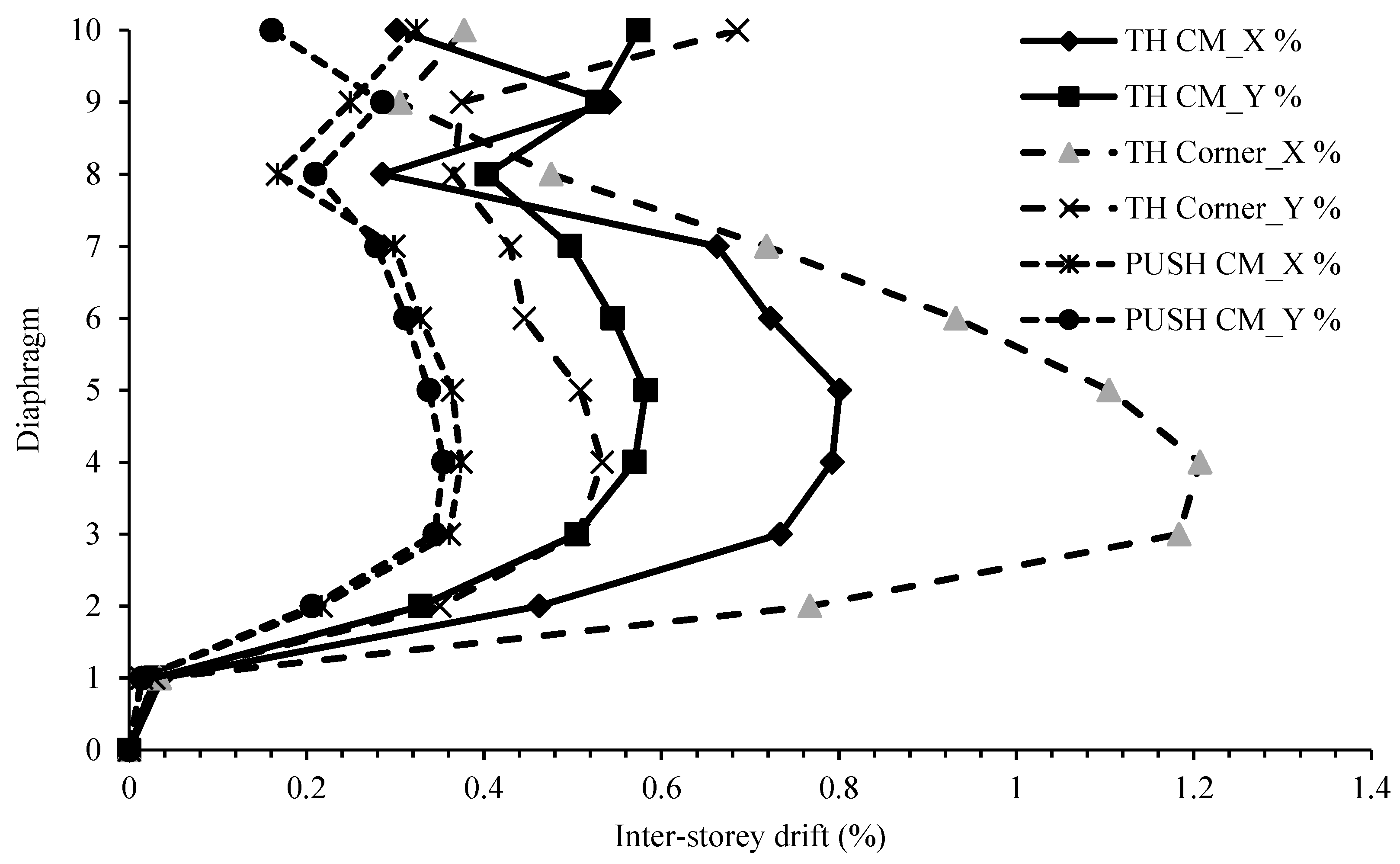

| Diaphragm | Floor level |
|---|---|
| 9-10 | Stair Cover |
| 8-9 | 7th Floor |
| 7-8 | 6th Floor |
| 6-7 | 5th Floor |
| 5-6 | 4th Floor |
| 4-5 | 3rd Floor |
| 3-4 | 2nd Floor |
| 2-3 | 1st Floor |
| 1-2 | Ground Floor |
| 0-1 | Basement |
| 0 | Base |
© 2019 by the authors. Licensee MDPI, Basel, Switzerland. This article is an open access article distributed under the terms and conditions of the Creative Commons Attribution (CC BY) license (http://creativecommons.org/licenses/by/4.0/).
Share and Cite
Malla, S.; Karanjit, S.; Dangol, P.; Gautam, D. Seismic Performance of High-Rise Condominium Building during the 2015 Gorkha Earthquake Sequence. Buildings 2019, 9, 36. https://doi.org/10.3390/buildings9020036
Malla S, Karanjit S, Dangol P, Gautam D. Seismic Performance of High-Rise Condominium Building during the 2015 Gorkha Earthquake Sequence. Buildings. 2019; 9(2):36. https://doi.org/10.3390/buildings9020036
Chicago/Turabian StyleMalla, Suraj, Sudip Karanjit, Purushottam Dangol, and Dipendra Gautam. 2019. "Seismic Performance of High-Rise Condominium Building during the 2015 Gorkha Earthquake Sequence" Buildings 9, no. 2: 36. https://doi.org/10.3390/buildings9020036
APA StyleMalla, S., Karanjit, S., Dangol, P., & Gautam, D. (2019). Seismic Performance of High-Rise Condominium Building during the 2015 Gorkha Earthquake Sequence. Buildings, 9(2), 36. https://doi.org/10.3390/buildings9020036






